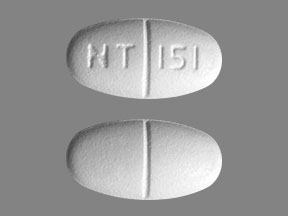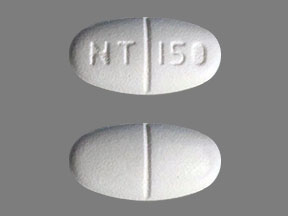Gabapentin may cause weight gain, but it is a rare side effect. Gabapentin is used to treat epilepsy.

It’s also taken for nerve pain, which can be caused by different conditions, including diabetes and shingles. Nerve pain can also happen after an injury.
In epilepsy, it’s thought that gabapentin stops seizures by reducing the abnormal electrical activity in the brain.
With nerve pain, it’s thought to block pain by affecting the pain messages travelling through the brain and down the spine.
Gabapentin is available on prescription. It comes as tablets, capsules and a liquid that you swallow.
Studies have shown that a small number of people taking gabapentin, a drug used to treat epilepsy and postherpetic neuralgia, experienced weight gain. People who do gain weight may gain about 5 pounds after 6 weeks of use.
-
- In people with epilepsy, weight gain occurred in 3% of people older than 12 years of age who were taking gabapentin (compared to 2% of people taking the placebo). Weight gain was also seen at a similar rate in pediatric epilepsy patients who were 3 to 12 years old.
- In people with postherpetic neuralgia, 2% of patients taking gabapentin experienced weight gain. No weight gain was found among people taking the placebo.
The cause of weight gain with gabapentin is likely due to increased appetite. You may be hungry more often. In some cases, weight gain may be due to fluid retention, another side effect of gabapentin. Another possible cause is not getting enough exercise if gabapentin is causing fatigue.
Some ways to avoid weight gain include:
-
- Eating a healthy and balanced diet
- Eating smaller portion sizes
- Avoiding high-calorie snacks and desserts like chips, pastries and sweets
- Eating low-calorie snacks like fruits and vegetables to manage hunger
- Getting regular exercise
Swelling from fluid retention may be reduced by:
-
- Sitting with your feet raised
- Avoiding standing for long periods of time
If gabapentin is causing you to gain weight, do not stop taking this drug on your own. Stopping the drug suddenly can lead to serious problems, especially if you are taking gabapentin for seizures. Abruptly stopping a seizure medicine can cause seizures that won’t stop.
Weight gain is one of many possible side effects. The most common side effects with gabapentin include:
-
- Clumsiness
- Viral infection
- Sleepiness
- Nausea and vomiting
- Speaking difficulties
- Tremor
- Swelling, usually involving the legs and feet
- Fatigue
- Fever
- Movements that are jerky
- Coordination difficulties
- Double vision
- Unusual eye movement
Detail Side Effects of Gabapentin
Along with its needed effects, a medicine may cause some unwanted effects. Although not all of these side effects may occur, if they do occur they may need medical attention.
Check with your doctor immediately if any of the following side effects occur:
More common
-
- Clumsiness or unsteadiness
- continuous, uncontrolled, back-and-forth, or rolling eye movements
More common in children
-
- Aggressive behavior or other behavior problems
- anxiety
- concentration problems and change in school performance
- crying
- depression
- false sense of well-being
- hyperactivity or increase in body movements
- rapidly changing moods
- reacting too quickly, too emotional, or overreacting
- restlessness
- suspiciousness or distrust
Less common
-
- Black, tarry stools
- chest pain
- chills
- cough
- depression, irritability, or other mood or mental changes
- fever
- loss of memory
- pain or swelling in the arms or legs
- painful or difficult urination
- sore throat
- sores, ulcers, or white spots on the lips or in the mouth
- swollen glands
- unusual bleeding or bruising
- unusual tiredness or weakness
Incidence not known
-
-
- Abdominal or stomach pain
- blistering, peeling, or loosening of the skin
- clay-colored stools
- coma
- confusion
- convulsions
- dark urine
- decreased urine output
- diarrhea
- difficult or troubled breathing
- dizziness
- fast or irregular heartbeat
- headache
- increased thirst
- irregular, fast or slow, or shallow breathing
- itching or skin rash
- joint pain
- large, hive-like swelling on the face, eyelids, lips, tongue, throat, hands, legs, feet, or sex organs
- loss of appetite
- muscle ache or pain
- nausea
- pale or blue lips, fingernails, or skin
- red skin lesions, often with a purple center
- red, irritated eyes
- unpleasant breath odor
- vomiting of blood
- yellow eyes or skin
-
Some side effects may occur that usually do not need medical attention. These side effects may go away during treatment as your body adjusts to the medicine. Also, your health care professional may be able to tell you about ways to prevent or reduce some of these side effects. Check with your health care professional if any of the following side effects continue or are bothersome or if you have any questions about them:
More common
- Blurred vision
- cold or flu-like symptoms
- delusions
- dementia
- hoarseness
- lack or loss of strength
- lower back or side pain
- swelling of the hands, feet, or lower legs
- trembling or shaking
Less common or rare
- Accidental injury
- appetite increased
- back pain
- bloated or full feeling
- body aches or pain
- burning, dry, or itching eyes
- change in vision
- change in walking and balance
- clumsiness or unsteadiness
- congestion
- constipation
- cough producing mucus
- decrease in sexual desire or ability
- dryness of the mouth or throat
- earache
- excess air or gas in the stomach or intestines
- excessive tearing
- eye discharge
- feeling faint, dizzy, or lightheadedness
- feeling of warmth or heat
- flushed, dry skin
- flushing or redness of the skin, especially on the face and neck
- frequent urination
- fruit-like breath odor
- impaired vision
- incoordination
- increased hunger
- increased sensitivity to pain
- increased sensitivity to touch
- increased thirst
- indigestion
- noise in the ears
- pain, redness, rash, swelling, or bleeding where the skin is rubbed off
- passing gas
- redness or swelling in the ear
- redness, pain, swelling of the eye, eyelid, or inner lining of the eyelid
- runny nose
- sneezing
- sweating
- tender, swollen glands in the neck
- tightness in the chest
- tingling in the hands and feet
- trouble sleeping
- trouble swallowing
- trouble thinking
- twitching
- unexplained weight loss
- voice changes
- vomiting
- weakness or loss of strength
- weight gain
Other side effects not listed may also occur in some patients. If you notice any other effects, check with your healthcare professional.
Call your doctor for medical advice about side effects. You may report side effects to the FDA at 1-800-FDA-1088.
